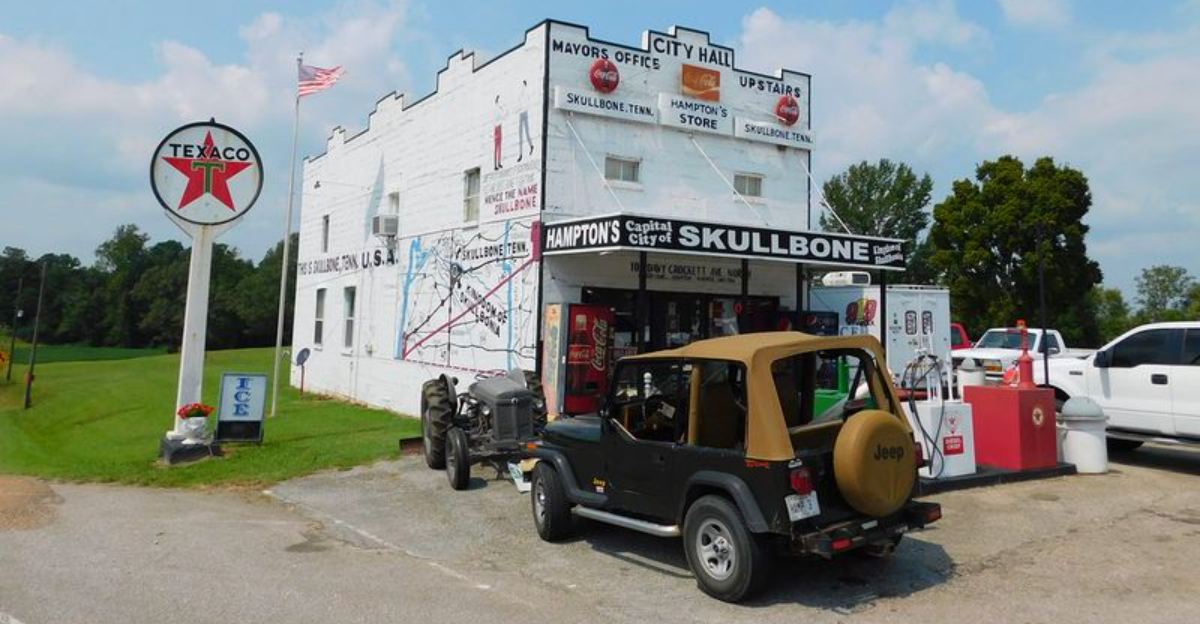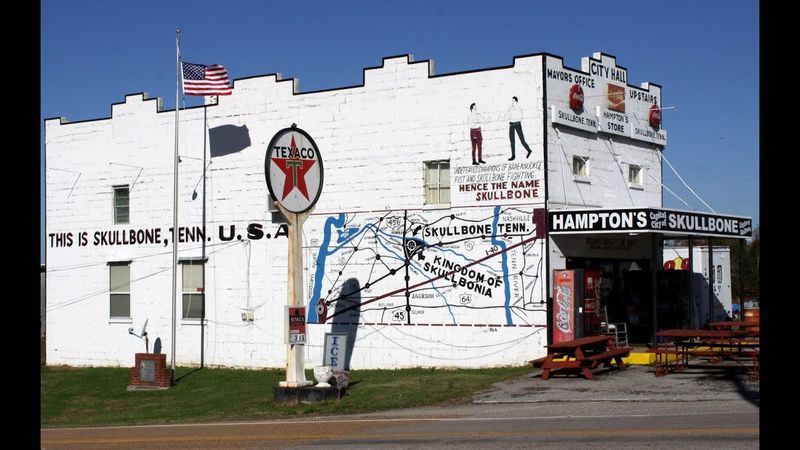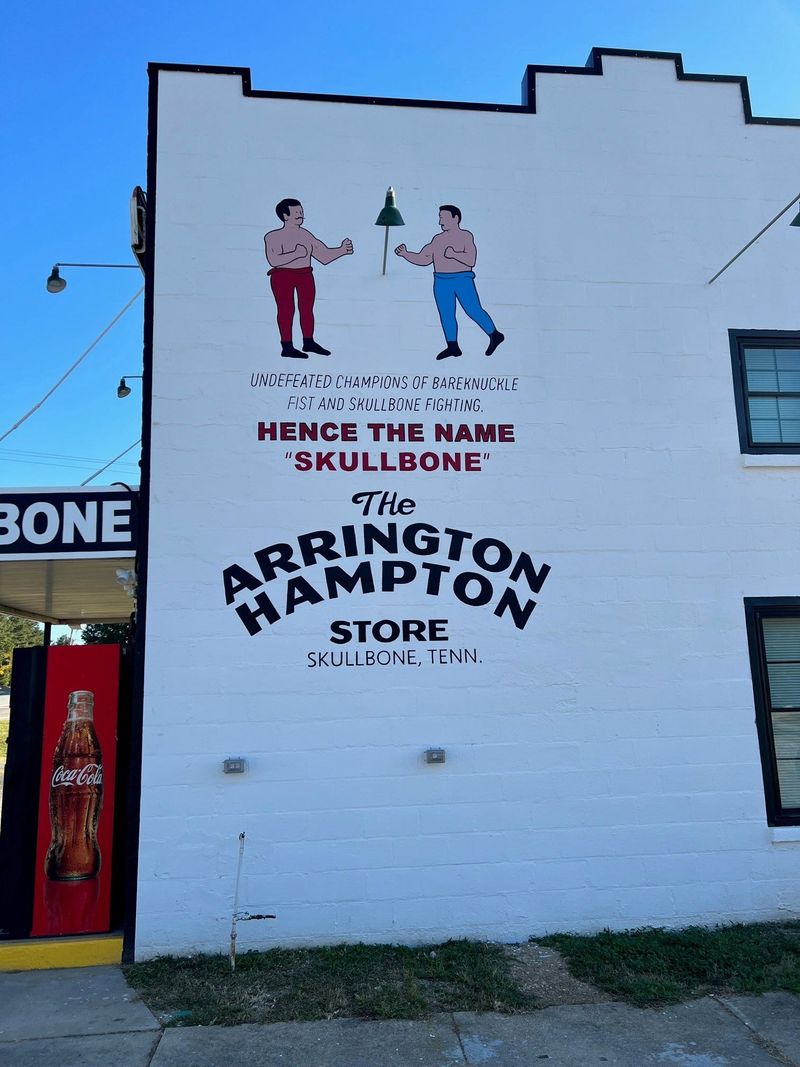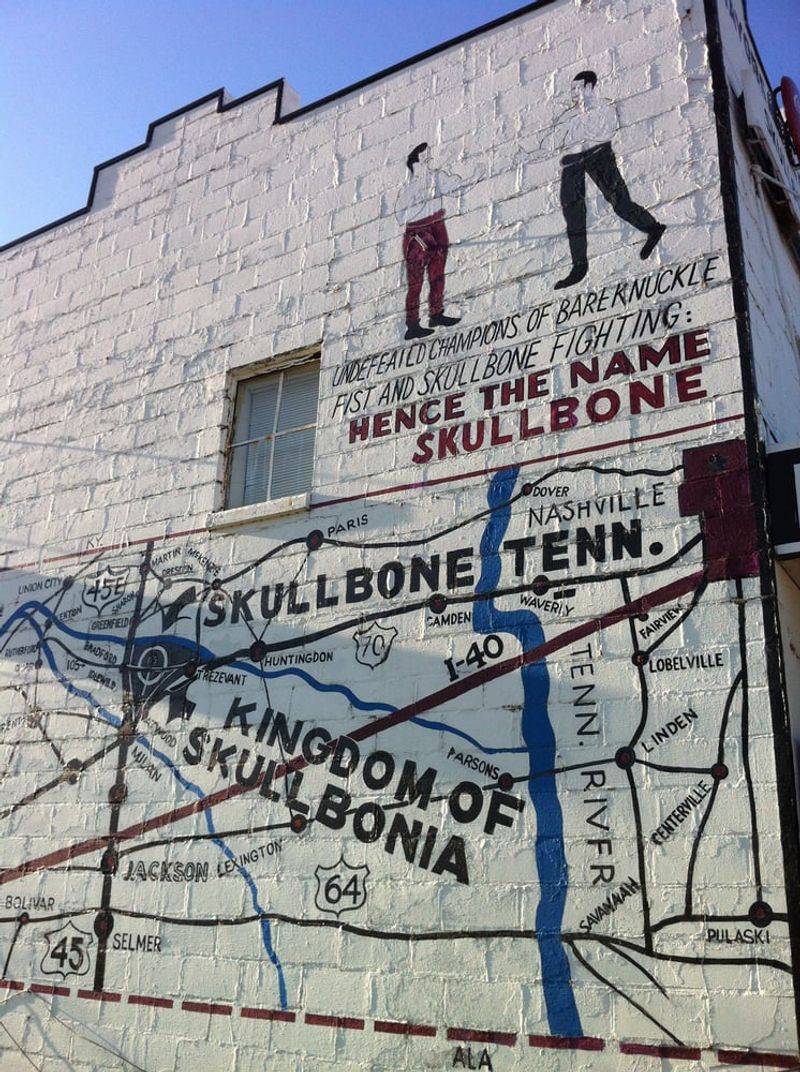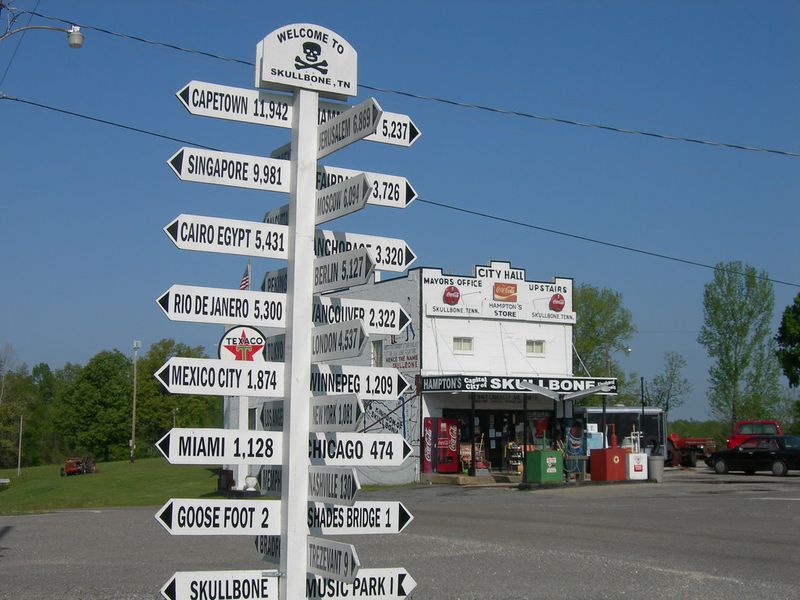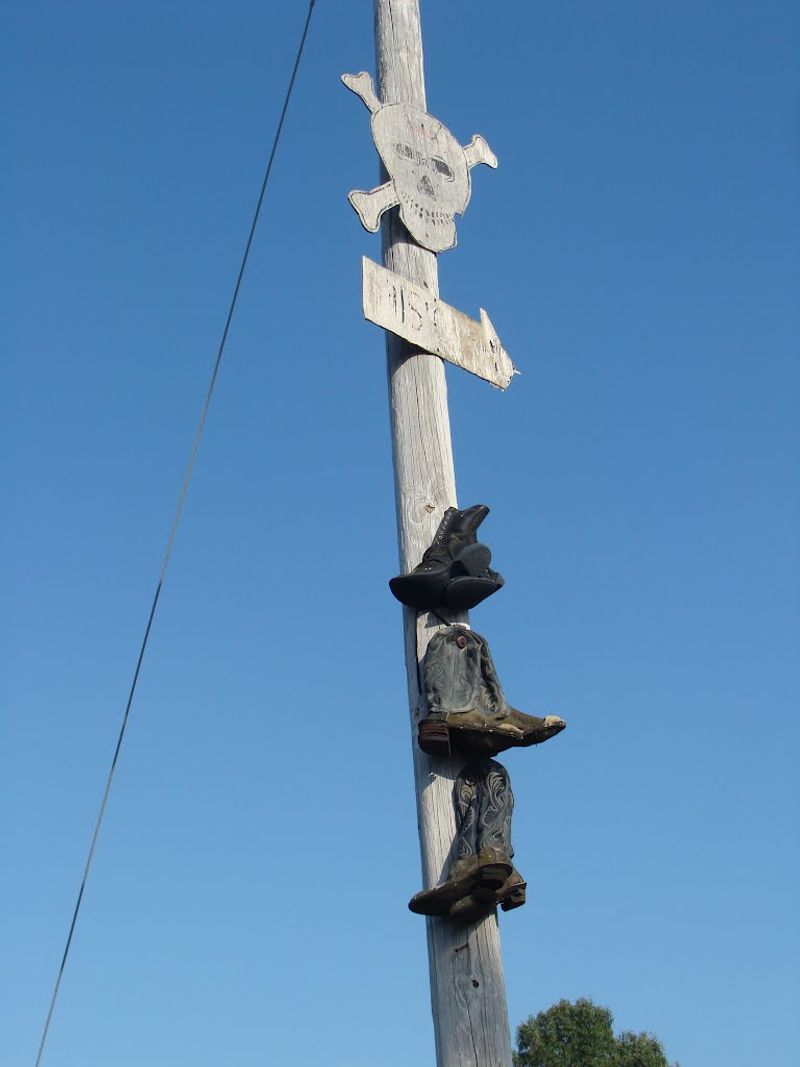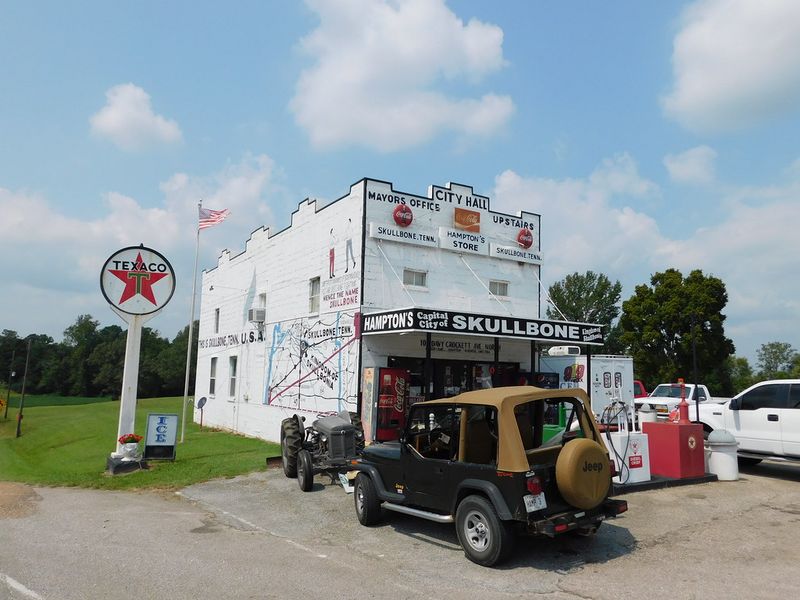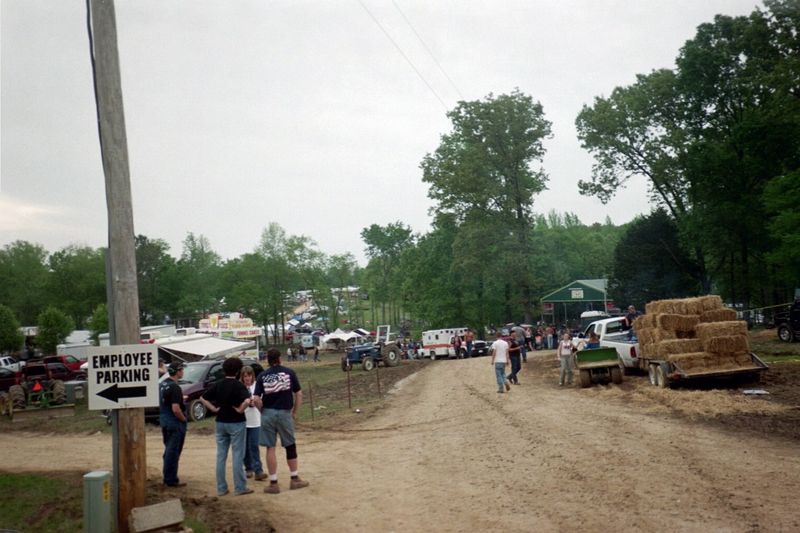Skullbone isn’t on most maps, yet it lingers in memory like a roadside mirage you can’t forget. This tiny Tennessee spot turns a single general store into a stage for folklore, art, and wild Americana. From boxing legends to mural-covered walls and quirky signposts, it celebrates eccentricity with pride. If you love offbeat places where history, humor, and creativity collide, this is your next obsession.
1. A Kingdom Without a Capital
Skullbone is unincorporated, but locals winkingly refer to it as the Capital of the Kingdom of Skullbonia. The title is half joke, half loving mythology, and entirely on brand for a place that thrives on personality. Visitors discover a crossroads that refuses to be ordinary, its identity sharpened by stories told on porches and painted on clapboard. The moniker unites community pride with playful sovereignty, elevating a small store and signpost into a symbolic seat of power. Wikipedia and WBBJ TV both note this quirky claim, which deepens the town’s lore and fuels curiosity.
2. Bare-Knuckle Fighting Origins
Skullbone’s name is said to trace back to brutal bare-knuckle fighting called fist and skull. These contests once drew crowds and created a reputation for toughness that still echoes through local legends. Memphis magazine recounts how notorious bouts became part of the area’s identity, whispered like ballads of grit. Wikipedia also references the origin, anchoring the lore in print. The violent spectacle eventually faded, yet the name stuck, reshaping itself into art and humor. Today, the story is painted on walls, printed on shirts, and shared as a distinctive badge of place.
3. A Single General Store Is Everything
Skullbone pretty much is its general store, known as Hampton’s or simply Skullbone Store. The wooden facade and porch feel like a portal to a time when a counter and coffee pot united a town. Only In Your State and The Clio describe how this modest building anchors identity, commerce, and memory. Locals met, argued, and laughed here, and visitors found stories tacked between nails and merchandise. The structure embodies resilience in wood and tin. Over decades, its shelves and steps gathered the fingerprints of a community, preserving countless micro histories within a single room.
4. Multifunctional Store: Post Office, City Hall & More
Hampton’s Store was never just a grocery stop. It served as post office, gas station, and a tongue-in-cheek City Hall for a town that pokes fun at formality. The Clio and Wikipedia recount the many hats the building wore, including a Mayor’s Office Upstairs sign that winked at visitors. Such multifunctionality was necessity and theater, demonstrating how small towns improvise civic life. People came for stamps, fuel, and conversation, then left with community ties. In an age of specialization, Skullbone’s everything-in-one model feels refreshingly human.
5. Murals That Tell a Story
The store’s sidewall functions as a local museum in paint. Murals portray bare-knuckle fighters, a whimsical map of Skullbonia, and icons that stitch myth to memory. The Clio and Only In Your State highlight these vivid scenes, which invite visitors to stand, stare, and decode. Each brushstroke feels like a footnote to oral history, translating legend into color. Weathering adds texture, merging art with time. The effect is celebratory and slightly surreal, proving that even a humble wall can become a living archive of place and pride.
6. Road Sign to the World
Across from the store stands a whimsical signpost pointing toward faraway cities with listed distances. It frames Skullbone as a tiny node connected to everywhere, a crossroads that imagines the globe from its gravel shoulder. Wikipedia documents the post, which doubles as humor and cartography. Travelers photograph the arrows like passport stamps made of wood. It’s an invitation to dream outward while standing still. The sign’s charm comes from its improbable audacity, turning a rural intersection into a playful atlas and reminding visitors that wonder can start at any road.
7. Telephone Pole & Cowboy Boots
Beside the signpost, a telephone pole wears a collage of cowboy boots hammered into its grain. It started as a why not tradition that stuck, as Memphis magazine notes. The weathered leather becomes sculpture, equal parts joke and memorial. Each boot hints at a traveler’s story, a dance step paused mid-stride. The installation evolves as new pairs appear, an ever-changing totem of passing souls. It’s a perfect Skullbone gesture, fusing whimsy with community expression and transforming a plain utility pole into participatory folk art.
8. Built By a Local Visionary
The Skullbone Store was built in 1948 by C. Reid Clipper Dowland with assistance from E.D. Treatschel. According to the National Park Service records, Dowland loved the symbolism of rural general stores and set out to craft one with soul. He even made the upstairs his weekend home, binding life and livelihood under a single roof. The building’s proportions and materials reflect care and intention. NPS archival details help ground the lore in documented history, showing how one man’s vision became a town’s enduring landmark.
9. On the National Register
Despite its tiny footprint, the Skullbone Store holds a place on the National Register of Historic Places. That designation recognizes architectural character and cultural significance, elevating local memory to national acknowledgment. The NPS listing preserves a rare example of a multifunctional rural hub, where commerce and folklore entwined. It also affirms the value of vernacular places often overlooked. For travelers, the plaque hints that this is no ordinary shopfront. It is a living document of Tennessee’s backroads, honored for telling big stories through small details.
10. A Peculiar Music History
Skullbone once hosted a rural music venue and festival that punched above its weight. Only In Your State and Memphis magazine mention lineups said to include Lynyrd Skynyrd and 38 Special, adding to the site’s rebellious aura. The gatherings were talented and rowdy, fitting the town’s rugged mythology. Amplifiers and pickup trucks shared the same horizon, and nights hummed with guitars. Whether legend or ledger, the stories amplify Skullbone’s mystique. Music folded into the town’s mythos like another mural stroke, loud and unpolished.
11. End of an Era (Store Closure)
In 2019, locals gathered as Hampton’s closed the Skullbone Store, marking the end of an era. Radio NWTN reported the crowd’s heartfelt goodbyes and the owner’s ill health that prompted the decision. People came to reminisce, to buy one last soda, to stand on the porch and listen. The closure felt like a chapter ending in the county’s shared book. Yet the stories remain, whispered along the road. Even shuttered, the building keeps its gravity, pulling memory back like a compass.
12. Tiny Town, Big Character
People say Skullbone is just one sign and a general store, but what a sign and what a store. Only In Your State and Memphis magazine capture its oversized personality, forged by history, humor, and visual flair. The murals, boots, and globe-pointing post combine into a curated oddity that feels organic. It is small without being timid, quaint without being dull. In a world of sameness, Skullbone stands stubbornly itself, proof that character can bloom at the simplest crossroads. Travelers leave with smiles and stories.
